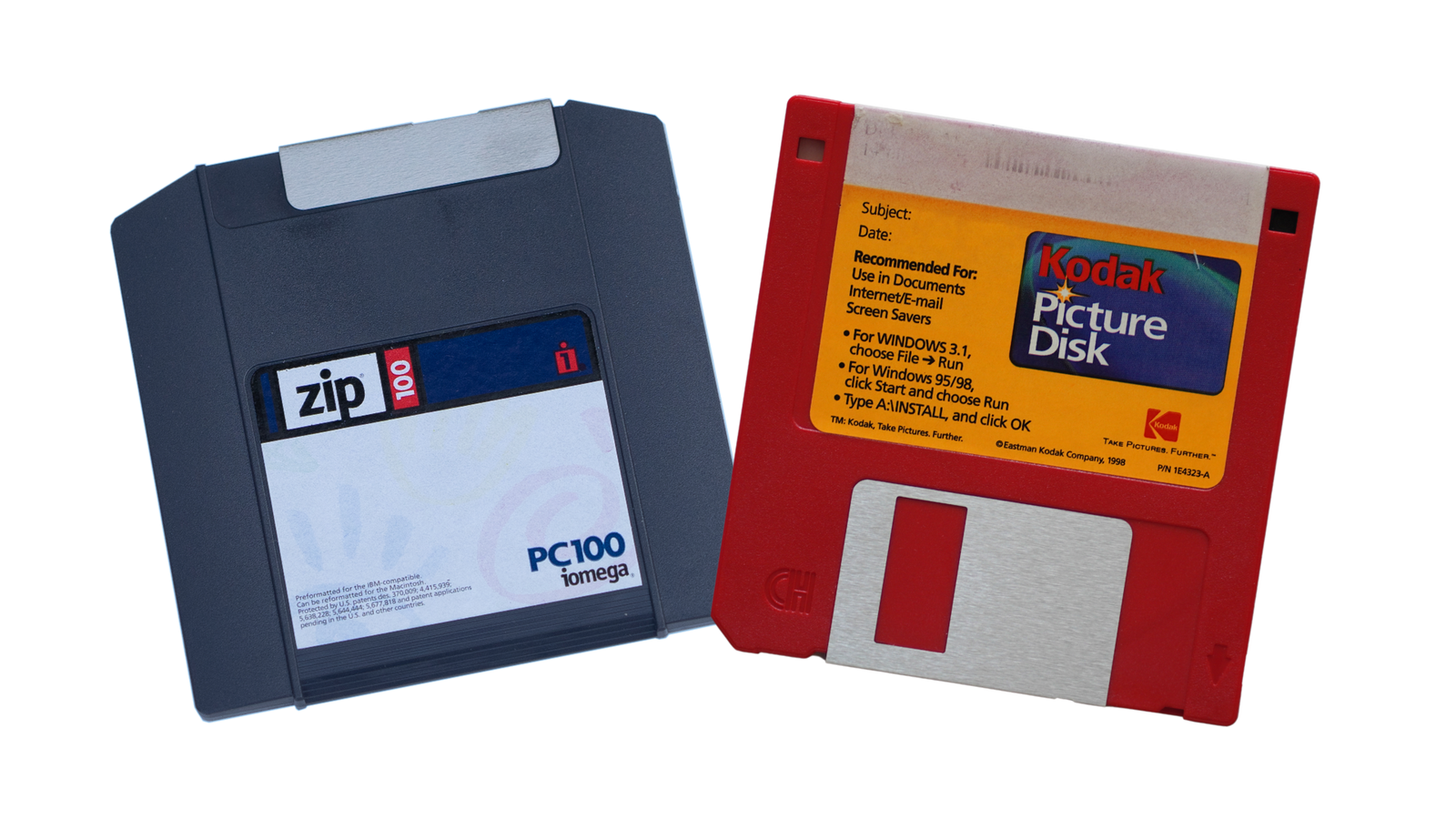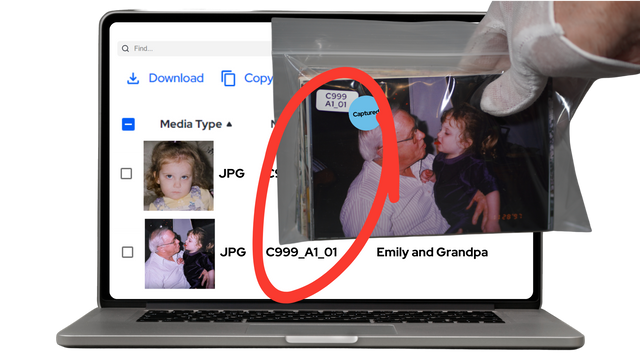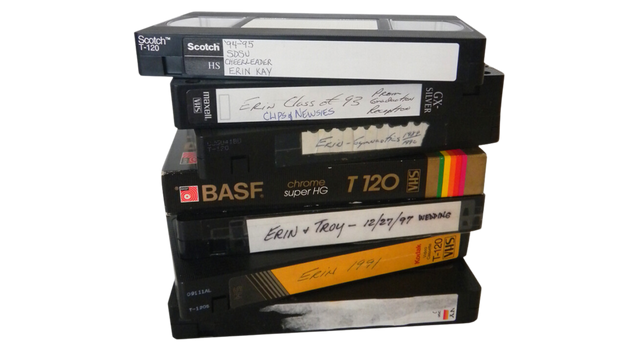Floppy Disk: The Original Portable Storage
If you saved a school paper or spreadsheet in the 1980s or 1990s, chances are it ended up on a floppy disk. These iconic squares—usually 3.5 inches wide—were once the peak of portability. But despite their fame, their floppy disk capacity was extremely limited, maxing out at just 1.44MB for the most common version.
That’s not even enough to store a single smartphone photo today.
Even more challenging: floppy disk readers are hard to find on modern computers. Many have stopped working due to magnetism or physical deterioration. If you’ve found an old box of disks, data recovery might require professional help. Heirloom offers a floppy disk data transfer service to preserve what’s inside these aging disks.

Zip Disk: A Big Leap in Capacity—But Not Compatibility
In the mid-90s, Zip disks felt futuristic. Created by Iomega, these thick cartridges looked similar to 3.5” floppies but packed a much larger punch—starting at 100MB and later jumping to 250MB and 750MB. That meant users could store photos, project files, and even short videos.
However, they came with a catch: you needed a Zip drive, a specific kind of reader that never became as common as floppy disk drives. Today, Zip drives are rare, and the ones that still function are usually found in tech repair shops or specialty digitization labs.
If you’ve uncovered a few Zip disks in a drawer or box, don’t assume you’ll be able to plug them in. Instead, read our guide on the floppy disk’s history to understand what made them obsolete—and what you can still do to access the data.

Zip Disk vs Floppy Disk: Which One Did You Use?

Both formats are now outdated, and recovering data requires the right tools—and sometimes a bit of luck. Fortunately, there’s help available.
Whether it’s a floppy disk reader or a rare Zip drive, Heirloom’s floppy disk to digital service can handle it all with care.
Why Data Recovery Matters
Memories are often stored on more than just photographs. Old resumes, letters, spreadsheets, and even family trees were saved on these now-ancient disks. With the rise of cloud storage, most people never look back—until they need to.
If your old disks are all you have, take steps to rescue that information today. Whether you’re preserving a personal legacy or cleaning out a closet, consider a data recovery service that doesn’t require you to dust off old hardware.

📧 Want more tips like this?
Subscribe to Heirloom emails to learn how to preserve your priceless memories. Get discount codes for expedited shipping, quality digitizing, and secure cloud storage. We never spam, and it’s easy to unsubscribe at any time.



